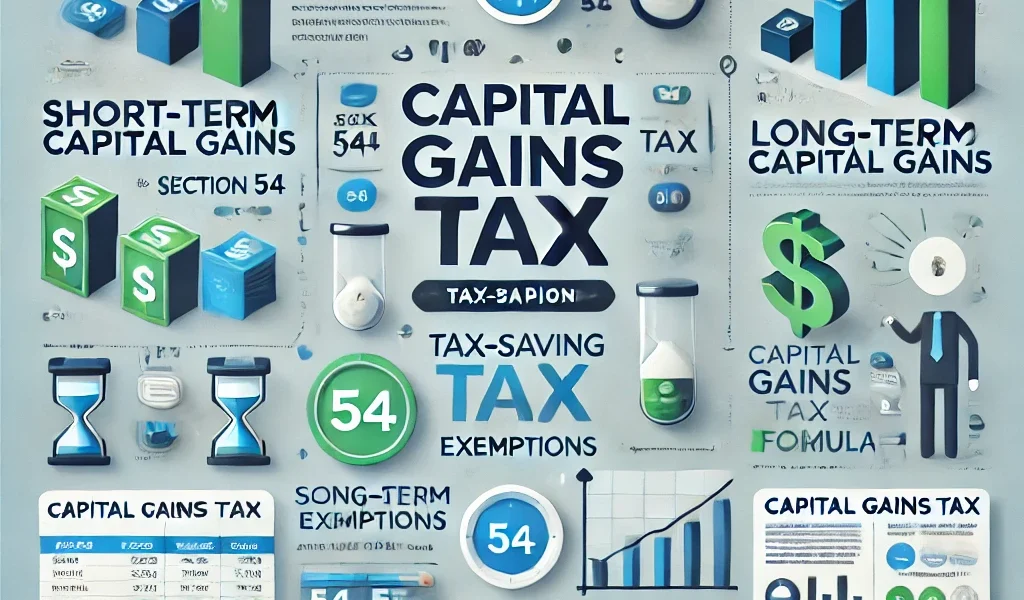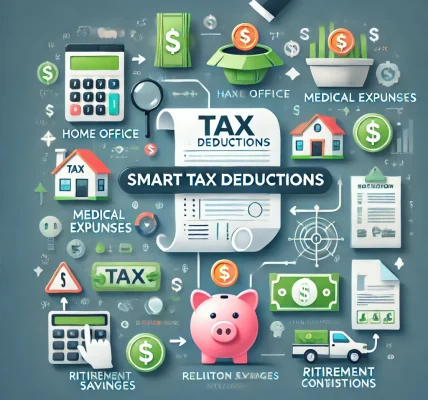Capital gains tax (CGT) is one of the most misunderstood aspects of taxation. Whether you’re selling a property, stocks, or other valuable assets, understanding how capital gains tax works can help you plan better and save money legally. This guide will simplify the key concepts of CGT, helping beginners navigate the tax implications of asset sales while staying compliant with tax laws.
1. What is Capital Gains Tax?
Capital gains tax is a tax levied on the profit earned when you sell a capital asset at a higher price than its purchase cost. The tax is only applicable when the asset is sold or transferred, not while you continue to hold it.
Key Terms to Understand:
- Capital Asset: Any property, including real estate, stocks, mutual funds, gold, and other valuable possessions.
- Capital Gain: The profit earned from selling an asset.
- Capital Loss: If the sale price is lower than the purchase price, it results in a capital loss, which may be set off against gains to reduce tax liability.
2. Types of Capital Gains
Capital gains are classified into two types based on the holding period of the asset:
a) Short-Term Capital Gains (STCG)
- If an asset is held for a short duration before selling, the profit is considered a short-term capital gain.
- Holding Period Criteria:
- Stocks & Equity Mutual Funds: Less than 12 months
- Real Estate: Less than 24 months
- Other Assets (gold, debt funds, etc.): Less than 36 months
- Tax Rate:
- Stocks & Equity Mutual Funds: 15% flat tax
- Other Assets: Taxed as per the individual’s income tax slab
b) Long-Term Capital Gains (LTCG)
- If an asset is held for a longer period before selling, the profit is considered a long-term capital gain.
- Holding Period Criteria:
- Stocks & Equity Mutual Funds: More than 12 months
- Real Estate: More than 24 months
- Other Assets: More than 36 months
- Tax Rate:
- Stocks & Equity Mutual Funds: 10% on gains exceeding ₹1 lakh (without indexation)
- Real Estate & Other Assets: 20% with indexation benefits
3. Capital Gains Tax Calculation
a) Short-Term Capital Gains Calculation:
STCG = Selling Price – (Purchase Price + Transfer Expenses + Improvement Costs)
Example: If you bought shares for ₹50,000 and sold them for ₹70,000, the STCG is ₹20,000, taxable at 15%.
b) Long-Term Capital Gains Calculation:
LTCG = Selling Price – (Indexed Cost of Acquisition + Indexed Cost of Improvement + Transfer Expenses)
👉 Indexed Cost adjusts the purchase price for inflation using the Cost Inflation Index (CII), reducing tax liability.
Example: If you purchased a property for ₹10 lakh in 2005 and sold it for ₹50 lakh in 2024, the indexed cost may increase to ₹30 lakh, reducing taxable LTCG to ₹20 lakh.
4. Exemptions & Deductions to Save Tax on Capital Gains
The Income Tax Act provides several exemptions that allow you to reduce or avoid CGT legally:
a) Section 54 – Exemption on Sale of Residential Property
- If you sell a residential property and reinvest the proceeds in another residential property within 2 years, you can claim exemption on LTCG.
- The new property must not be sold within 3 years.
b) Section 54F – Exemption for Non-Residential Assets
- If you sell assets like gold, bonds, or land and invest the proceeds in a residential house, LTCG exemption is available.
c) Section 54EC – Investment in Capital Gains Bonds
- You can invest up to ₹50 lakh in NHAI or REC Bonds within 6 months of selling the asset.
- The investment is locked for 5 years, but no tax is levied on LTCG.
d) Setting Off Capital Losses
- Short-term losses can be adjusted against short-term or long-term gains.
- Long-term losses can only be adjusted against long-term gains.
- Losses can be carried forward for up to 8 years to offset future gains.
5. How to Report Capital Gains in Your Income Tax Return (ITR)?
To file capital gains correctly:
- Use ITR-2 or ITR-3 (for businesses & professionals)
- Provide detailed asset sale information: Date of purchase, sale, amount, indexed cost, exemptions claimed
- Pay advance tax if applicable to avoid penalties
- Submit supporting documents like sale deed, CII records, and investment proofs
6. Common Mistakes to Avoid
🚨 Not Reporting Small Gains – Even if your LTCG is below ₹1 lakh, you must declare it in your ITR.
🚨 Ignoring Indexation Benefit – Without using CII, you may end up paying higher taxes than necessary.
🚨 Missing Deadline for Reinvestment – To claim Section 54/54F benefits, reinvest within the specified period.
🚨 Not Keeping Proper Documentation – Always keep sale and purchase receipts, improvement costs, and investment proofs for easy tax filing.
7. Frequently Asked Questions (FAQs)
🔹 Can I avoid capital gains tax completely? Yes, by reinvesting in property (Section 54/54F) or bonds (Section 54EC) within the prescribed time limits.
🔹 Do I have to pay capital gains tax if I gift an asset? No, gifts are not taxable for the giver, but the recipient may have to pay tax when they sell it.
🔹 What happens if I inherit an asset? There is no inheritance tax, but the capital gains tax will apply when you sell it.
🔹 Are agricultural lands subject to capital gains tax? Rural agricultural land is exempt, but urban land sales attract CGT.
🔹 Can I claim exemptions if I buy property before selling my old one? Yes, under Section 54, if the purchase occurs within 1 year before or 2 years after the sale.
8. Final Thoughts
Capital gains tax can seem complex, but by understanding the basics and utilizing available exemptions, you can significantly reduce your tax liability.
📌 Quick Action Steps:
✅ Determine the holding period of your asset. ✅ Calculate indexed cost for LTCG savings. ✅ Use exemptions (Section 54, 54F, 54EC) wisely. ✅ Maintain records for tax filing. ✅ Consult a tax expert if needed.




